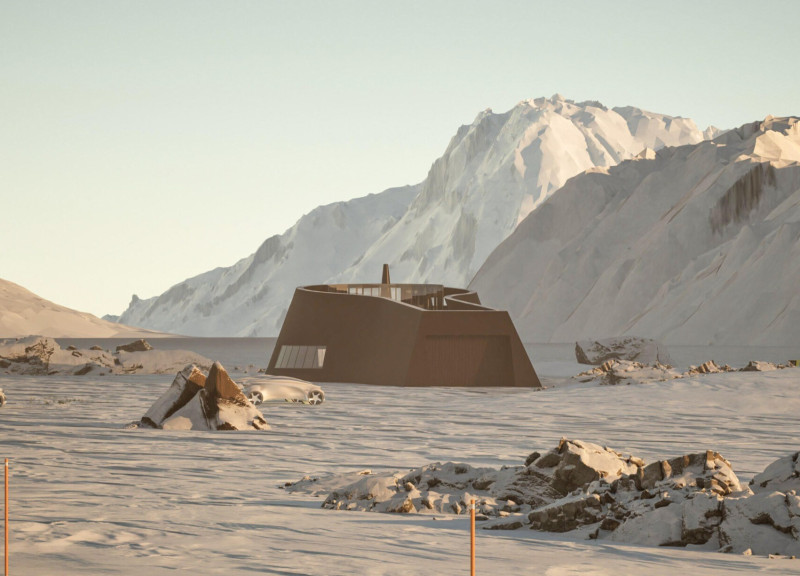5 key facts about this project
From the outset, the project showcases a deliberate approach to architecture that prioritizes natural light, open spaces, and user-centric design. The layout is characterized by fluidity, with interconnected areas that promote movement and interaction. This spatial organization underlines the intent to create a welcoming atmosphere for all visitors, facilitating a sense of community engagement.
One notable aspect of the design is its materiality, which reflects a commitment to sustainability and local context. The use of materials such as reclaimed timber, low-emissivity glass, and local stone creates a dialogue between the building and its environment. The reclaimed timber brings warmth and texture to the interiors, infusing the spaces with a tactile quality that enhances user experience. The extensive use of low-emissivity glass ensures ample natural light permeates the spaces while also contributing to energy efficiency. The integration of local stone not only grounds the structure within its geographical context but also highlights the architectural heritage of the area.
The project incorporates a series of unique architectural elements, including expansive overhangs, green roofs, and strategically placed courtyards. These features not only provide aesthetic value but also serve practical functions, such as enhancing thermal performance and promoting biodiversity. The overhangs create shaded areas that reduce heat gain while offering sheltered outdoor spaces for communal activities. The green roofs contribute to stormwater management and biodiversity, establishing a micro-ecosystem that benefits both the building and the surrounding environment.
In terms of functionality, the design is versatile, accommodating a range of activities. The main gathering areas are equipped with flexible seating arrangements and configurable spaces that can adapt to various events. Smaller meeting rooms and collaborative spaces are thoughtfully positioned to encourage spontaneous interactions among users, reflecting contemporary trends in workspace design. This focus on adaptability ensures that the building remains relevant and functional over time, catering to evolving needs.
The architectural language employed throughout the project exemplifies a modern aesthetic that respects traditional forms. Clean lines and a harmonious color palette contribute to an understated elegance, while the thoughtful placement of windows and openings ensures that each space benefits from optimal views and natural light. This design approach aligns with contemporary architectural ideas that prioritize minimalism and clarity of form, ensuring that the building is both functional and visually appealing.
The project stands as a testament to the potential of architecture to create environments that enhance daily life. It reflects a deep understanding of how design can influence human behavior and interactions, ultimately aiming to provide a space that nurtures community connections. This emphasis on communal values is evident in the thoughtfully designed outdoor spaces, which encourage social interactions and collaboration.
For those interested in a deeper exploration of this architectural project, reviewing the architectural plans, sections, and various design elements provides further insight into the thought processes that guided its development. Each detail has been considered to enhance not only aesthetic appeal but also functional performance, exemplifying how design and architecture can work together to create meaningful spaces. This project serves as a valuable case study in contemporary architecture, inviting readers to delve into its various features and functionalities.


























